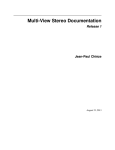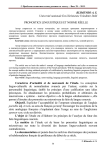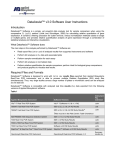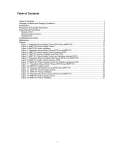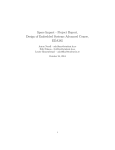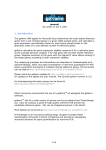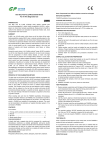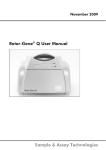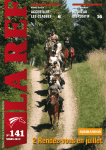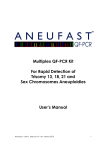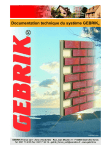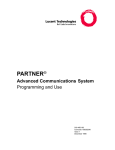Download Evaluation of suitable reference genes for gene expression studies
Transcript
Evaluation of suitable reference genes for gene expression studies in bronchoalveolar lavage cells from horses with Inflammatory Airway Disease Drs. L. Beekman Student number: 3050181 Sept-Dec 2009 Supervisors: Dr. C.M. Westermann Department of equine medicine, Faculty of veterinary medicine, University of Utrecht Dr. R. Léguillette Faculty of veterinary medicine, University of Calgary Evaluation of suitable reference genes for gene expression studies in bronchoalveolar lavage Contents Abstract 4 1. Introduction 5 2. Materials and methods 9 2.1 Horses 9 2.2 Study Design 9 2.3 Sample collection and preparation 10 2.4 RNA extraction and cDNA synthesis 10 2.5 Reference gene selection and primer design 10 2.6 Quantitative Real-Time PCR 12 2.7 Data analysis 12 3. Results 13 3.1 Quantity and quality of RNA isolated from BAL samples 13 3.2 Amplification efficiency of the qRT-PCR reactions 13 3.3 Gene expression levels of candidate reference genes 13 3.4 Expression stability of the seven candidate reference genes 14 4. Discussion 18 5. Conclusion 19 References 20 -2- Evaluation of suitable reference genes for gene expression studies in bronchoalveolar lavage Attachments 22 Melting curve data candidate reference genes 22 Doing a good gene expression study: Considerations and recommendations 26 1. Introduction 26 2. Samples 27 3. RNA extraction 27 4. RNA quantity and quality measurements 30 5. cDNA synthesis 31 6. Primer design 33 7. Quantitative real-time PCR 35 8. Conclusion 38 References 39 -3- Evaluation of suitable reference genes for gene expression studies in bronchoalveolar lavage Abstract The best way to normalize quantitative real-time polymerase chain reaction (qRT-PCR) results is by using an internal control, or housekeeping gene. To date, no reference genes have been validated for expression studies of bronchoalveolar lavage cells of horses. The aim of this study was to determine a gene with a stable mRNA expression in bronchoalveolar lavage cells of horses with inflammatory Airway Disease (IAD) irrespective of treatment with intramuscular dexamethasone (DEX) or inhaled fluticasone propionate (FLUC). The mRNA expression of seven housekeeping genes (B2M, HPRT1, GAPDH, ACTB, UBB, RPL32 and SDHA) was investigated in bronchoalveolar lavage cells of seven horses with IAD. The horses were treated in a controlled randomized cross-over design study with DEX (seven horses) and FLUC (three horses). The seven housekeeping genes were tested with qRT-PCR to analyze the stability of the genes under the described circumstances. The results were analyzed with both the NormFinder software and the GeNorm software. These software’s rank the genes according to the stability of their expression. Glyceraldehyde 3-phosphate dehydrogenase (GAPDH) came out as the most stable housekeeping gene in the NormFinder software, under the described circumstances, with a stability factor of 0,013. GAPDH was followed by RPL32 (stability factor 0,025), HPRT (stability factor 0,027) and B2M (stability factor 0,028) in this order. SDHA (stability factor 0,033), ACTB (stability factor 0,034) and UBB (stability factor 0,040) completed the list with the highest stability factor. The best combination of two genes is GAPDH and RPL32 (stability factor 0,014). The GeNorm software ranks GAPDH and SDHA as the most stable housekeeping genes, followed by HPRT, RPL32, UBB and ACTB. The least stable expressed gene was B2M. Based on the pair-wise variation cut-off value (0,15), a combination of the four most stable housekeeping genes (GAPDH, SDHA, HPRT and RPL32) is accurate for normalization in this kind of studies. We thus recommend using GAPDH alone or in combination with either RPL32 or SDHA as housekeeping genes for gene expression studies in the BAL fluid of horses with IAD treated with steroids. -4- Evaluation of suitable reference genes for gene expression studies in bronchoalveolar lavage 1. Introduction Inflammatory Airway Disease (IAD) in horses is an inflammatory respiratory disorder that can affect horses of any age. The definition of IAD was established at a conference in Boston in 2002. The members of the conference determined inclusion and exclusion criteria to stipulate if a horse with a respiratory history has IAD or not (Couëtil et al 2007; Hoffman 2002). Table 1: Inclusion and exclusion criteria for determining IAD in horses (Couëtil et al 2007) Inclusion criteria 1. 2. 3. 4. Exclusion criteria Respiratory clinical signs during exercise but not at rest Absence of increased lung resistance at rest after challenge with moldy hay The presence of airway hyper-reactivity measured by an increase in lung resistance (RL) by 75% at lower doses of nebulized histamine a BAL with increased percentage of mast cells or/and eosinophils or/and neutrophils 1. 2. Evidence of infection Increased respiratory effort at rest after challenge with moldy hay The disorder can develop in horses which are stabled inside or after exposure to dusty hay or straw. The immunological basis of IAD is still not well documented and more research needs to be done to determine if there is a TH1, a TH2 or a TH17 inflammation reaction involved. The most important test to confirm a diagnosis of IAD is a bronchoalveolar lavage (BAL). Horses with no clinical signs have on average 60% macrophages, 35% lymphocytes, <5% neutrophils, <2% mast cells, <0,1% eosinophils and occasional or no epithelial cells in BAL fluid (Hoffman 2002). The BAL fluid of horses with IAD is characterized by increased total nucleated cell counts with lymphocytosis, and monocytosis. The count of neutrophils and/or mast cells and/or eosinophils can be increased (Couëtil et al 2007; Bedenice et al 2008; Couëtil et al 2001; Fogarty et al 1991; Hare et al 1998; Hoffman et al 1999; Moore et al 1995). There is no research done yet to determine an effective treatment for IAD. It is thought that environmental management changes to minimize exposure to irritants, helps reducing the presence of clinical signs. Based on research done in horses with Recurrent Airway Obstruction (Couroucé-Malblanc et al 2008; Lavoie et al 2002; Robinson et al 2002; Robinson et al 2009; Giquère et al 2002; Picandet et al 2003), glucocorticosteroids, mainly dexamethasone, and -5- Evaluation of suitable reference genes for gene expression studies in bronchoalveolar lavage mast cells stabilizers are used in practice to control the airway inflammation in horses with IAD, but there is no scientific evidence that they really work. Tohver et al (summer 2009, in press) did a research project to determine the effect of the glucocorticosteroïds dexamethasone (DEX) and fluticasone propionate (FLUC) in horses with IAD. They found that both treatments significantly decreased airway hyper-sensitivity and airway hyper-reactivity and they also found a significant decrease in the amount of lymphocytes in the bronchoalveolar lavage fluid of horses with IAD. There was no effect on the counts of inflammatory cells content (neutrophils, mast cells and eosinophils) in the bronchoalveolar lavage fluid. The corticosteroids that were used, worked by decreasing the airway hyper-sensitivity and airway hyper-reactivity but they had no effect on the inflammatory cells content. The main question that came out of this project was: how do these corticosteroids work in horses with IAD. We think that the corticosteroids maybe have an inhibitory effect on the expression of the cytokines and chemokines produced by these inflammatory cells. To reach valid conclusions in any gene expression study it is very important to have a stable housekeeping gene or internal control to normalize the effect of the amount of starting material, enzymatic efficiencies, and differences between tissues or cells in overall transcriptional activity on the measurement of the expression levels (Cappelli et al 2008; Vandesompele 2002). A good housekeeping gene should ideally be constitutively expressed by all cell types and should not be affected by disease and experimental procedure. Housekeeping genes are expressed by any cell type but their expression varies between tissues and organs (Kriegova et al 2008). Also experimental procedures can have influence on the expression of housekeeping genes. It is therefore necessary to evaluate multiple housekeeping genes before their use, in the tissue or organ of interest, but also under the relevant experimental conditions (Cappelli et al 2008). However, a lot of studies make use of earlier described, common used, housekeeping genes without validation of their presumed stability of expression (Vandesompele 2002). This might result in unreliable conclusions. As an example to illustrate the importance of a good housekeeping gene, we can show the effect of an unstable expressed housekeeping gene with a simple example using the software REST 2009 (Relative Expression Software Tool 2009) (Pfaffle 2002). The REST 2009 software is a tool that can analyze gene expression data from qPCR experiments. It uses expression of reference genes to normalize expression levels of genes of interest in different samples. In figure 1a the efficiency for both GAPDH and IL-4 is set to two. The cycle-threshold (Ct) value, defined as the cycle number at which the fluorescent signal of the reaction crosses the level of signal that reflects a statistically significant increase over the calculated baseline signal (threshold), is approximately the same before and after treatment for GAPDH. The Ct values for IL-4 are a little bit higher after treatment compared to the untreated group. Using these values the software tells us that the expression of IL-4 is down-regulated after treatment. In figure 1b only the Ct values after treatment for GAPDH are changed by one cycle for the Ct -6- Evaluation of suitable reference genes for gene expression studies in bronchoalveolar lavage value. The values for GAPDH in the before treatment group and the values for IL-4 are the same as in figure 1a. The efficiency of the reaction is still two for both GAPDH and IL-4. Using the new Ct values for GAPDH the software tells us that the expression of IL-4 after treatment is not significantly different from the expression of IL-4 in the untreated samples. This example shows that a difference of only one Ct-value in the expression of the housekeeping gene gives a totally different outcome in the results leading to completely opposite conclusions for the study. Using a stable expressed housekeeping gene for normalization is therefore very important. The aim of this study was therefore to determine a stable housekeeping gene for use in a gene expression study in BAL fluid of horses with IAD treated with DEX and FLUC. Figure 1a: Result of the REST software with a stable expressed housekeeping gene (GAPDH). The expression of IL-4 is down-regulated after treatment. -7- Evaluation of suitable reference genes for gene expression studies in bronchoalveolar lavage Figure 1b: Result of the REST software with an unstable expressed housekeeping gene (GAPDH). The expression of IL-4 before treatment is not different from the expression of IL-4 after treatment. -8- Evaluation of suitable reference genes for gene expression studies in bronchoalveolar lavage 2. Materials and methods The BAL samples were collected in a previous study by Tohver et al (in press). 2.1 Horses Eight adult horses, from mixed breeds with IAD from our research herd, were studied. The horses consisted of five mares and three geldings of various ages. Criteria for inclusion were (1) the presence of respiratory clinical signs during exercise but not at rest, (2) the absence of increased lung resistance at rest after a challenge with moldy hay, (3) the presence of airway hyper-reactivity measured by an increase in lung resistance (RL) by 75% at lower doses of nebulized histamine and (4) a BAL with increased percentage of mast cells and/or eosinophils and/or neutrophils. The animals were kept in the same outside paddocks for at least three weeks before the experiment and the management remained the same throughout the period of the study. The horses were kept on straw and were fed round-bale hay. None of the horses had received treatments for respiratory disease during the 3 months preceding the study. 2.2 Study design The study used a controlled randomized cross over design. Two groups of four horses each were subjected to two treatment protocols. On day 0 of the study a bronchoalveolar lavage was performed on all the horses as described below. The treatments with DEX and FLUC were started on day 2 of the study. DEX was administered intramuscularly once a day in the morning between seven and eight o’clock and FLUC was nebulized using the Aerohippus® twice daily between seven and eight o’clock in the morning and in the afternoon. On day 16, the last day of treatment, a second BAL was carried out. The first treatment phase was followed by a 3 week washout period. In the second part of the study, the treatments were switched between groups. The bronchoalveolar lavages were performed following the same protocol as in the first half of the study. -9- Evaluation of suitable reference genes for gene expression studies in bronchoalveolar lavage 2.3 Sample collection and preparation BALs were performed in the morning following a standardized procedure as described previously (Lavoie 2002). Briefly, horses were sedated with xylazine (0.4 to 0.6 mg/kg of body weight, IV) and butorphanol (10 to 20 µg/kg of body weight, IV). A fiber-optic flexible endoscope (3 m in length, 12,9 mm in diameter) was inserted through the nostrils and directed down into the lung until its tip was wedged in one of the distal bronchus. During the passage of the endoscope through the airway, several small boluses of a 0.5% solution of lidocaine solution were administered (up to a maximal volume of 120ml) to desensitize the airway mucosa. Two 250 ml boluses of sterile 0.9% sodium chloride were alternatively instilled under pressure into the bronchus and aspirated via the endoscope biopsy channel by use of a suction pump. Vacuum pressure of the pump was maintained at 15 kPa. The BAL fluid was collected in a 500 ml plastic Nalgene® jar kept on ice and its volume was recorded. Two 50 ml tubes for each horse were filled with the BAL fluid and spinned down during 10 minutes at 1750 RPM in a centrifuge (GP Centrifuge, Beckman USA). The supernatant was carefully removed and the cell pellet was transferred to a 1,5 ml RNase-free eppendorf tube after which 1 ml of RNAlater was added. The samples were immediately stored for later use at -20°C. 2.4 RNA extraction and cDNA synthesis Total RNA was extracted using the RNeasy mini kit (Qiagen) according to the manufacturer’s instructions. The cells were homogenized using the needle and syringe method. RNA concentration and quality was measured with the Nanodrop 1000 by optical density 260/280 nm with expected values around 2,0. An average of 435 ng (SD ± 109,6) total RNA was retrotranscribed using the Omniscript RT Kit (Qiagen) combined with Oligo(dT)12-18 Primers (Invitrogen) and RNaseOUT Recombinant Ribonuclease Inhibitor (Invitrogen) according to the manufacturer’s specifications, immediately after the RNA extraction. cDNA was stored at -80°C until use. 2.5 Reference gene selection and primer design Eight widely used reference genes were evaluated: β-actin (ACTB), glyceraldehyde-3Pdehydrogenase (GAPDH), hypoxanthine ribosyltransferase (HPRT), β-2-microglobin (B2M), succinate dehydrogenase complex subunit A (SDHA), ubiquitin B (UBB) and ribosomal protein L32 (RPL32). Primers for ACTB and GAPDH were designed based on available sequences using the Primer3 software. Primers for HPRT1, B2M, SDHA, TFRC, UBB, RPL32 and R18S were earlier described (Cappelli 2008). - 10 - Evaluation of suitable reference genes for gene expression studies in bronchoalveolar lavage Table 2: Details of the eight genes evaluated Gene Symbol Gene Name Function Accession number ACTB GAPDH B2M β-actin Glyceraldehyde-3P-dehydrogenase β-2-microglobin AF035774 AF083897 X69083 HPRT Hypoxanthine ribosyltransferase RPL32 Ribosomal protein L32 SDHA Succinate dehydrogenase complex subunit A UBB Ubiquitin B Cytoskeletal structural protein Glycolytic enzyme Cytoskeletal protein involved in cell locomotion Metabolic salvage of purines in mammals Member of ribosomal proteins Electron transporter in the TCA cycle and respiratory chain Protein degradation AY372182 CX594263 DQ402987 AF506969 Table 3: Characteristics of used primers Gene Symbol Sense, antisense primers (5’3’) Amplicon length (bp) ACTB CTGGCACCACACCTTCTACA CCCTCATAGATGGGCACAGT GGTGAAGGTCGGAGTAAACG AATGAAGGGGTCATTGATGG CCTGCTCGGGCTACTCTC CATTCTCTGCTGGGTGACG AATTATGGACAGGACTGAACGG ATAATCCAGCAGGTCAGCAAAG GGGAGCAATAAGAAAACGAAGC CTTGGAGGAGACATTGTGAGC GAGGAATGGTCTGGAATACTG GCCTCTGCTCCATAAATCG TTCGTGAAGACCCTGACC CCTTATCCTGGATCTTGGC 249 GAPDH B2M HPRT RPL32 SDHA UBB - 11 - 106 89 121 138 91 91 Evaluation of suitable reference genes for gene expression studies in bronchoalveolar lavage 2.6 Quantitative Real-Time PCR One microliter of cDNA was added to thirteen microliter PerfeCta™ SYBR® Green Super Mix Low ROX, two microliter of the forward primer, two microliter of the reverse primer and seven microliter of nuclease free water to make a total volume of 25 microliter. The final concentration of both the primers in the reaction was 40 nM. The PCR reactions were performed on a MX3005P machine (Stratagene). PCR conditions for HPRT1, B2M, SDHA, TFRC, UBB and RPL32 were: initial denaturation at 95 degrees for 5 minutes, followed by 45 cycles of denaturation at 95 degrees for 1 minute, annealing at 62 degrees for 30 seconds and extension at 70 degrees for 30 seconds. After the last cycle the melting curve was determined in the range 60°-95°C. For GAPDH and ACTB we used the same protocol, only the annealing temperature was 64°C instead of 62°C. All the reactions were ran in triplicate on the same plate. Negative control samples were always included in the amplification reactions to check for contamination. Specificity of amplification was confirmed by melting curve analyses and 1% agarose gel electrophoresis. 2.7 Data analysis The raw qRT-PCR amplification data were exported from the MxPro software (Stratagene) to excel. The software LinRegPCR (Ruijter 2009) was used to calculate the efficiencies for all the reactions separately. LinRegPCR is a free software tool that uses non-baseline corrected data to perform a baseline correction on each sample separately, then determine a window-oflinearity and then uses linear regression analysis to fit a straight line trough the PCR data set. From the slope of this line the PCR efficiency of each individual sample is calculated (Ramakers 2003). The efficiency corrected Ct-values were converted to a linear scale using the ∆Ctmethod. The averages of the ∆Ct-values for each triplicate were used both in the NormFinder software and in the GeNorm software (Vandesompele et al 2002). NormFinder is a freely available software which automatically calculates the stability value for all candidate reference genes tested (Andersen 2004). The stability value is based on the combined estimate of intra- and intergroup expression variations of the genes studied. A low stability value indicating a low combined intra- and intergroup variation proves high expression stability (Ohl et al 2005). GeNorm is also freely available on the internet. The program selects from a panel of candidate reference genes the two most stable genes or a combination of multiple stable genes for normalization (Ohl et al 2005). The program generates an M value for each gene and a pairwise stability measure to determine the benefit of adding extra reference genes for the normalization (Perez et al 2008). - 12 - Evaluation of suitable reference genes for gene expression studies in bronchoalveolar lavage 3. Results 3.1 Quantity and quality of RNA isolated from BAL samples After RNA extraction the quantity and quality of the RNA was measured using the Nanodrop2000 by optical density of 260/280 nm. The samples had an average RNA concentration of (µg/µl ± SD) 57,14 ± 41,48 µg/µl and the average of the 260/280 nm ratio was (260/280 ratio ± SD) 1,95 ± 0,11. 3.2 Amplification efficiency of the qRT-PCR reactions The amplification efficiency for all qRT-PCR reactions was calculated using the LinRegPCR software. The results are shown in table 4. The best PCR efficiency that can be expected is two or a hundred percent. In that case each DNA strand is replicated in each cycle of the PCR. For ACTB and GAPDH the PCR efficiency is a little bit less than a hundred percent, so in each cycle only 96,15% or 96,25% respectively of the DNA strands is replicated. B2M, HPRT, RPL32, SDHA and UBB all have an efficiency higher then two or higher than a hundred percent. This is theoretically impossible, because in each PCR cycle the DNA can only be replicated once and not more than that. The efficiency values are calculated values and therefore can be a little bit higher than two. The linear regression coefficient for all candidate reference genes ranged between 0,997 and 0,999. Table 4: PCR efficiency of the used primer sets. PCR efficiency PCR efficiency (%) 2 Correlation (R ) ACTB 1.923 96,15 0,998 GAPDH 1.925 96,25 0,998 B2M 2.069 103,45 0,998 HPRT 2.021 101,05 0,999 RPL32 2.025 101,25 0,999 SDHA 2.010 100,5 0,999 UBB 2.013 100,65 0,997 3.3 Gene expression levels of candidate reference genes To evaluate the gene expression levels of all studied housekeeping genes we took the average of the expression measured in all the samples we used (n=20). Out of the seven studied genes, B2M (mean Ct 17,081) and UBB (mean Ct 17,562) were expressed at the highest levels, followed by ACTB (mean Ct 17,563), RPL32 (mean Ct 19,361), GAPDH (mean Ct 20,724) and SDHA (mean Ct 21,737). HPRT (mean Ct 22,953) was expressed at the lowest level in BAL cells. - 13 - Evaluation of suitable reference genes for gene expression studies in bronchoalveolar lavage 30 25 Ct values 20 15 10 5 0 B2M HPRT RPL32 SDHA UBB GAPDH ACTB Figure 2: Average Ct of candidate reference genes. Shows the expression levels of the candidate reference genes. The values are given as qRT-PCR cycle threshold numbers (Ct values). The circles show the average ct value, the bars indicate the standard deviation. 3.4 Expression stability of the seven candidate reference genes The data were first analyzed with the NormFinder software. The software calculates the stability value for each candidate reference gene and also takes in account variation across subgroups and avoids artificial selection of co-regulated genes. The program starts with calculating the inter- and intragroup variation, between the untreated and treated samples, as shown in Figure 3. The blue and the red bars indicate the intergroup variation of the expression of the candidate reference genes in BAL cells before treatment and after treatment of the horses respectively. The green bars indicate the average of the intragroup variation. The housekeeping gene with the lowest intergroup variation combined with the lowest average intragroup variation is the most stable housekeeping gene. Then the program calculates a stability value for each candidate reference gene. The gene with the lowest stability value is the most stable housekeeping gene. As a result, the gene with the highest stability value is the least stable. Figure 4 shows the stability values for the seven candidate reference genes. GAPDH is the most stable expressed gene (stability value 0,013) followed by RPL32 (stability value 0,025), HPRT (stability value 0,027), B2M (stability value 0,028), SDHA (stability value 0,033) and ACTB (stability value (0,034). UBB has the highest stability factor (0,04) and is therefore the least stable expressed. - 14 - Evaluation of suitable reference genes for gene expression studies in bronchoalveolar lavage The program also gives the best combination of two genes. The best combination of two genes is GAPDH and RPL32 (stability factor 0,014). 0,040 0,030 Variation 0,020 0,010 Intergroup variation untreated samples 0,000 Intergroup variation treated samples -0,010 ACTB GAPDH RPL32 SDHA UBB HPRT B2M Average intragroup variation of untreated and treated samples -0,020 -0,030 -0,040 Figure 3: Inter- and intragroup variation of the candidate reference genes. The blue bars show the intergroup variation of the BAL samples taken before treatment of the horses. The red bars show the intergroup variation of the BAL samples taken after treatment of the horses. The green bars show the average of the intragroup variation. 0,045 0,04 Stability value 0,035 0,03 0,025 0,02 0,015 0,01 0,005 0 UBB ACTB SDHA B2M <-- Least stable genes HPRT RPL32 GAPDH Most stable genes --> Figure 4: Stability value of the candidate reference genes calculated by the NormFinder software. - 15 - Evaluation of suitable reference genes for gene expression studies in bronchoalveolar lavage Then the same data were analyzed with the GeNorm software. This program calculates the gene expression stability measure (M) for a reference gene as the average pair-wise variation (V) for that gene with all other tested reference genes. Stepwise exclusion of the gene with the highest M value allows ranking of the tested genes according to their expression stability. This is shown in figure 5. All the candidate reference genes started with an M value below 1,5 (default limit below which candidate reference genes can be classified as stably expressed) with a lower value indicating a greater stability of the gene expression (Ohl 2005). The candidate reference genes are ranked based on the average of their M value. B2M is the least stable gene and was excluded first. B2M was followed by ACTB, UBB, RPL32 and HPRT. GAPDH and SDHA are the most stable housekeeping genes. Average expression stability M 1,2 1 0,8 0,6 0,4 0,2 0 B2M ACTB UBB <-- Least stable genes RPL32 HPRT GAPDH SDHA Most stable genes --> Figure 5: Average expression stability M calculated by the GeNorm software. Stepwise exclusion of the least stable genes by calculating the average expression stability measure M. The value of M was calculated for each gene, and the least stable gene with the highest M value was automatically excluded for the next calculation round. The x-axis from left to right indicates the ranking of the genes according to their expression stability. The GeNorm software calculates also a normalization factor assessing the optimal number of reference genes for generating that factor. The results are shown in figure 6. The normalization factor is calculated from at least two genes taking into account the variable V as the pair-wise variation between two sequential normalization factors. A pair-wise variation value of 0,15 is taken by Vandesompele et al (2002) as a cut-off value, below which the inclusion of an additional control gene is not required. Figure 6 tells us that only a combination of the four best genes, GAPDH, SDHA, HPRT and RPL32, have a pair-wise variation value between 0,15. Out of these results it can be concluded that normalization using four housekeeping genes (GAPDH, SDHA, HPRT and RPL32) is an adequate normalization approach for this kind of gene expression studies. - 16 - Evaluation of suitable reference genes for gene expression studies in bronchoalveolar lavage 0,3 Pairwise variation V 0,25 0,2 0,15 0,1 0,05 0 V2/3 V3/4 V4/5 V5/6 V6/7 Figure 6: Determination of the optimal number of reference genes for normalization. The software calculates the normalization factor from at least two genes at which the variable V defines the pair-wise variation between two sequential normalization factors. V4/5 for example, shows the variation of the normalization factor of three genes in relation to four genes. - 17 - Evaluation of suitable reference genes for gene expression studies in bronchoalveolar lavage 4. Discussion This is the first study done in horses with IAD to determine a stable housekeeping gene for gene expression studies. There are several methods available for accurate normalization of gene expression using qRT-PCR (Andersen et al 2004; Vandesompele et al 2002), but there is nothing known about which algorithm should be used. For that reason it is better to use a comparison of different methods of reference gene selection. That allows for a better identification of the most reliable controls and reduces the risk of artificial selection of coregulated transcripts (Ayers et al 2007). In this study we compared two different software’s (NormFinder, GeNorm) to evaluate seven candidate reference genes, in order to select the best reference gene to be used in bronchoalveolar lavage samples from horses with IAD treated with DEX and FLUC. The samples were all collected and processed following a standard protocol to reduce the risk of variation between samples. To make cDNA we used different amounts of mRNA in the reaction. We used standard one microliter of cDNA in each qRT-PCR reaction. As a result the cDNA concentration differed in almost each reaction. It is better to use the same concentration of cDNA in each reaction, because then there is a third software (BestKeeper (Pfaffl et al 2004)) that we could use beside NormFinder and GeNorm. This program uses the standard deviation of the difference in expression in all the samples used for the different candidate reference genes (Pfaffl et al 2004). Because we used different concentrations of cDNA the standard deviation is big. That is the reason why we cannot use this program in this study. Table 5: Ranking of the candidate reference genes based on their stability calculated by the NormFinder and GeNorm software. Ranking 1 NormFinder GAPDH GeNorm GAPDH/SDHA 2 RPL32 3 HPRT HRPT 4 B2M RPL32 5 SDHA UBB 6 ACTB ACTB 7 UBB B2M - 18 - Evaluation of suitable reference genes for gene expression studies in bronchoalveolar lavage There are some major differences in the results that we got from the two programs as shown in table 5. Both programs ranked GAPDH as the most stable housekeeping gene. SDHA in the other hand shares a first place with GAPDH following the GeNorm software while NormFinder ranks SDHA on a fifth place. The rest of the ranking also shows a lot of variability between the two programs. This is not what we expected. We expected a similar ranking of the candidate reference genes. We can say that GAPDH is the most stable expressed gene in this panel of genes, but we cannot be sure that GAPDH alone is enough to give a proper validation, because the GeNorm software tells us that we need the four most stable housekeeping genes while NormFinder gives us that a combination of GAPDH and RPL32 has a higher stability factor (stability factor 0,014) then GAPDH alone (stability factor 0,013). NormFinder tells us that we have to use only GAPDH while GeNorm tells us to use a combination of GAPDH, SDHA, HPRT and RPL32 for validation of the expression stability. The reason for these differences in ranking is probably our study design. The fact that we used different concentrations of cDNA for different samples, results in wrong proportions in expression of the genes between the samples. This results in incorrect results if the program uses this proportion in expression between the samples for the calculation of the stability of the genes. GeNorm calculated normalization factors for all the samples and then compares them with each other to calculate the pair-wise variation V. Because of the difference in the amount of cDNA that we used for different samples we cannot use the pair-wise variation data (figure 6). ACTB was ranked on the sixth place by both the programs. This means that this gene is not stable expressed and as a result not useful for validation in gene expression studies. Considerable is that ACTB is a frequently used housekeeping gene in a lot of gene expression studies. This is also the case in a gene expression study done in horses with Recurrent Airway Expression treated with corticosteroids (Giquère et al 2002). ACTB was used in this study without validation of the expression stability under the used experimental circumstances. Our project shows that the use of ACTB in this study is probably not right and the results should be taken with a large reservation. 5. Conclusion We thus recommend using GAPDH alone or in combination with either RPL32 or SDHA as housekeeping genes for studies on the gene expression in bronchoalveolar lavage cells from horses with IAD after treatment with DEX and FLUC. - 19 - Evaluation of suitable reference genes for gene expression studies in bronchoalveolar lavage References Andersen C.L., Jensen J.L. and Ørntoft T.F. (2004) Normalization of real-time quantitative reverse transcription-PCR data: a model-based variance estimation approach to identify gene suited for normalization, applied to bladder and colon cancer data sets. Cancer Res 64, 52455250 Ayers D., Clements D., Salway F., Day P. (2007) Expression stability of commonly used reference genes in canine articular connective tissues. BMC Vet Res 3 Bedenice D., Mazan M.R. and Hoffman, A.M. (2008) Association between cough and cytology of bronchoalveolar lavage fluid and pulmonary function in horses diagnosed with inflammatory airway disease. J Vet Intern Med 22, 1022-1028. Cappelli K., Felicitti M., Capomaccio S., Spinsanti G., Silvestrelli M and Verini Supplizi, A. (2008) Exercise induced stress in horses: Selection of the most stable reference genes for quantitative RT-PCR normalization. BMC Mol Bio 9, 49 Couëtil L.L., Rosenthal F.S., DeNicola D.B. and Chilcoat C.D. (2001) Clinical signs, evaluation of bronchoalveolar lavage fluid, and assessment of pulmonary function in horses with inflammatory respiratory disease. Am J Vet Res 62, 538-546 Couëtil L.L., Hoffman A.M., Hodgson J., Buechner-Maxwell V., Viel L., Wood J.L.N., Lavoie JP. (2007) Inflammatory Airway disease of horses. J Vet Intern Med 21, 356–361 Couroucé-Malblanc A., Fortier G., Pronost S., Siliart B. and Brachet G. (2008) Comparison of prednisolone and dexamethasone effects in the presence of environmental control in heavesaffected horses. The Vet J 175, 227-233 Fogarty U. and Buckley T. (1991) Bronchoalveolar lavage findings in horses with exercise intolerance. Equine Vet J 23, 434-437 Giguère S., Viel L., Lee E., MacKay R.J., Hernandez J. and Franchini M. Cytokine induction in pulmonary airways of horses with heaves and effect of therapy with inhaled fluticasone propionate. (2002) Vet Im and Immunopath 85, 147-158 Hare J.E. and Viel L. (1998) Pulmonary eosinophilia associated with increased airway responsiveness in young racing horses. J Vet Intern Med 12, 163-170. Hoffman A., Robinson N.E., Wade J.F. Proceedings on a workshop on inflammatory airway disease: defining the syndrome. 30th September – 3rd October 2002 Boston, USA. Hoffman A.M. (1999) Bronchoalveolar lavage technique and cytological diagnosis of small airway inflammatory disease. Equine Vet Educ 11, 330-336 - 20 - Evaluation of suitable reference genes for gene expression studies in bronchoalveolar lavage Kriegova E., Arakelyan A., Fillerova R., Zatloukal J., Mrazek F., Navratilova Z., Kolek V., Du Bois R.M. and Petrek M. (2008) PSMB2 and RPL32 are suitable denominators to normalize gene expression profiles in bronchoalveolar cells. BMC Mol Bio 9, 69 Lavoie J.P., Léguillette R., Pasloske K., Charette L., Sawyer N., Guay D., Murphy T. and Hickey G.J. (2002) Comparison of effects of dexamethasone and the leukotriene D4 receptor antagonist L-708,738 on lung function and airway cytologic findings in horses with recurrent airway obstruction. Am J Vet Res 63, 579-585 Moore B.R., Krakowka S., Robertson J.T. and Cummins J.M. (1995) Cytologic evaluation of bronchoalveolar lavage fluid obtained from standardbred racehorses with inflammatory airway disease. Am J Vet Res 56, 562-567 Ohl F., Jung M., Xu C., Stephan C., Rabien A., Burkhardt M., Nitsche A., Kristiansen G., Loening S.A., Radonié A. and Jung K. (2005) Gene expression studies in prostate cancer tissue: which reference gene should be selected for normalization? J Mol Med 83, 1014-1024 Pfaffl M.W., Horgan G.W., Dempfle L. (2002) Relative expression software tool (REST) for group-wise comparison and statistical analysis of relative expression results in real-time PCR. NAR 30, 36 Pfaffl M.W., Tichopad A., Prgomet C. and Neuvians T.P.(2004) Determination of stable housekeeping genes, differentially regulated target genes and sample integrity: BestKeeper – Excel-based tool using pair-wise correlations. Biotechnology Letters 26, 509-515 Picandet V., Léguillette R. and Lavoie J-P. Comparison of efficacy and tolerability of isoflupredone and dexamethadone in the treatment of horses affected with recurrent airway obstruction (‘heaves’). (2003) Equine Vet J 35, 419-424 Ramakers C., Ruijter J.M., Lekanne Deprez R.H., Moorman A.F.M. (2003) Assumption free analysis of quantitative real-time PCR data. Neurosci Letters 339, 62-66 Robinson N.E., Jackson C., Jefcoat A., Berney C., Peroni D. and Derksen F.J. (2002) Efficacy of three corticosteroids for the treatment of heaves. Equine Vet J 34, 17-22 Robinson N.E., Berney C., Behan A. and Derksen F.J. (2009) Fluticasone propionate aerosol is more effective for prevention than treatment of recurrent airway obstruction. J Vet Intern Med 23, 1247-1253 Ruijter J.M., Ramakers C., Hoogaars W., Bakker O., van den Hoff M.J.B., Karlen Y. and Moorman A.F.M. (2009) Amplification efficiency: linking baseline and bias in the analysis of quantitative PCR data. Nucleic Acids Research, in press. Vandesompele J., De Preter K., Pattyn F., Poppe B., Van Roy N., De Paepe A. and Speleman F. (2002) Accurate normalization of real-time quantitative RT-PCR data by geometric averaging of multiple internal control genes. Genome Bio 3, 7 - 21 - Evaluation of suitable reference genes for gene expression studies in bronchoalveolar lavage Attachments Melting curve B2M Melting curve ACTB - 22 - Evaluation of suitable reference genes for gene expression studies in bronchoalveolar lavage Melting curve GAPDH Melting curve HPRT - 23 - Evaluation of suitable reference genes for gene expression studies in bronchoalveolar lavage Melting curve RPL32 Melting curve UBB - 24 - Evaluation of suitable reference genes for gene expression studies in bronchoalveolar lavage Melting curve SDHA - 25 - Evaluation of suitable reference genes for gene expression studies in bronchoalveolar lavage Doing a good gene expression study: Considerations and recommendations 1. Introduction This report gives an overview of the gene expression study I did at the University of Calgary. I will describe how I did my study and I will give some considerations and recommendations about things you have to think about by setting up a gene expression study. A part of this report is based on scientific evidence; a part is based on my own experience. Hopefully this helps other students to set up a good gene expression study. The aim of my study was to determine if the cytokine expression, the activation status of the inflammatory cells, in broncho-alveolar lavage (BAL) fluid in horses with Inflammatory Airway Disease (IAD) is affected by treatment with intramuscular dexamethasone (DEX) and inhaled fluticasone propionate (FLUC). To answer this question I used samples taken from eight horses with IAD before and after treatment with DEX and FLUC as described in my research report (Evaluation of suitable reference genes for gene expression studies in bronchoalveolar lavage cells from horses with Inflammatory Airway Disease). We were interested in the influence of DEX and FLUC on the expression of 22 different cytokines and chemokynes. Because there is no scientific evidence about the immune response that is involved in IAD we choose some TH1, TH2 and TH17 cytokines and some chemo-attractants to investigate (table 1). Table 1: Cytokines and chemokynes of interest TH1 TH2 TH17 Chemo-attractant IL-1β IL-4 IL-17 Eotaxin-2 IL-2 IL-5 Eotaxin-3 IL-3 IL-6 IL-8 IL-8 IL-9 IL-12 IL-10 IL-16 IL-13 IL-18 IL-18 TNF-α TNF-β TNF-β GATA-3 IFN-γ - 26 - Evaluation of suitable reference genes for gene expression studies in bronchoalveolar lavage 2. Samples As described in the introduction I used BAL cells taken from horses with IAD before and after treatment with DEX and FLUC. Fifty milliliter of the BAL fluid for each horse was centrifuged (10 minutes at 1750 RPM) to obtain a cell pellet. The cell pellet was stored in 0,5 milliliter RNAlater at -20°C for later use. Some of the horses had a lot of mucus in their BAL fluid. This can affect the RNA extraction. Therefore it is probably better to pass the BAL fluid through a filter (a double layer of sterile cotton gauze or nylon mess is used in a lot of studies) to remove debris and mucus from the fluid. An advantage of this method is the preferential loss of bronchial epithelial cells, but a disadvantage of this method is that you also lose some inflammatory cells because they stick to the mucus. The company Sigma-Aldrich recommends in their product description of RNAlater (1) to resuspend the cell pellet in a small volume of PBS to loosen up the cell pellet before adding the RNAlater so that the RNAlater can enter the cells more easily. If you don’t filter the sample before centrifuging it, the cell pellet can be very big because of all the mucus. 0,5 milliliter of RNAlater is then maybe not sufficient to obtain a good stabilization of the RNA. Sigma-Aldrich recommends adding 5-10 equivalent volumes of RNAlater to the cell suspension. 3. RNA extraction The samples were thawed on ice. After thawing they were centrifuged to separate the cell pellet from the RNAlater. I had a lot of problems with separating the cell pellet from the RNAlater. I centrifuged the samples for different periods of time (range 5 – 10 minutes) at different speeds (range 5,000 – 14,500 RPM). 14,500 RPM was the maximum speed of the centrifuge I used. Because RNAlater has a high density, this speed is probably not high enough to form a cell pellet. What you can do to obtain a cell pellet at lower speeds is using small volumes of cells in the reagent since smaller volumes of cells pellet efficiently with lower centrifugal force (2). By extracting the last samples for the study I removed all the RNAlater with some small particles that were floating around, without centrifuging the samples first. I left the big cell pellet in the tube. By doing this I lost some cells, but I got a higher quantity of RNA by doing it this way than by leaving some or a lot RNAlater in the tube. - 27 - Evaluation of suitable reference genes for gene expression studies in bronchoalveolar lavage For RNA extraction I used the RNeasy Mini Kit (Qiagen) following the manufacturer’s instructions (4). I will briefly describe the procedure. The first step is disrupting the cells by adding buffer RLT. The protocol says 350 µl buffer RLT if there are less then 5x106 cells and 600 µl of buffer RLT if the amount of cells is between 5x106 and 1x107 cells. I used 400 µl of buffer RLT for all the samples. I knew that there were less then 5x106 cells in all the samples, because the cells were counted in a previous study. Because of the amount of mucus in some of the samples and because I left some RNAlater in the tubes when I extracted the first samples, 400 µl was maybe not enough. I left the samples for ten minutes before homogenizing the cells. For homogenizing I used the needle and syringe method. Recommended in the manufacturer’s protocol, is a blunt 20-gauge needle. I used a sharp 21-gauge needle. It is not a problem to use a sharp needle instead of a blunt one, only make sure that you don’t damage the inside of the (eppendorf-) tube you are using. I think that this method was pretty successful. I got good quantities of RNA for most of the samples. There are a lot of techniques available for disrupting and homogenizing different types of tissues and cells. Table 2 gives an overview of these methods. The method you have to use depends on the material you use and of course what is available in the laboratory. The next steps, except for the last part, were all performed following the manufacturer’s instructions. For the last step, the elution of the RNA, I added 35 µl of nuclease free water directly to the spin column membrane. I waited ten minutes before centrifuging it. Then I added the flow through with the eluted RNA again directly to the spin column membrane and waited for another ten minutes before centrifuging it again. With this method I got a higher concentration of RNA then with both adding only the first amount of nuclease free water and centrifuging the column directly after adding the water. To ensure that there is no genomic DNA contamination after extraction, the RNA can be treated with DNase, an enzyme that degrades the genomic DNA. You don’t really need this if you make sure that you design your primers so that you can distinguish between amplification of mRNA and amplification of genomic DNA (See primer design). - 28 - Evaluation of suitable reference genes for gene expression studies in bronchoalveolar lavage Table 2: Methods for disrupting and homogenizing different types of tissues and cells (3) Starting material Cultured animal cells Disruption method Addition of lysis buffer Homogenization method Rotor–stator homogenizer QIAshredder™ homogenizer Syringe and needle Comments 5 If <1 x 10 cells are processed lysate can be homogenized by vortexing Animal tissue Rotor–stator homogenizer Rotor–stator homogenizer Mortar and pestle QIAshredder homogenizer Syringe and needle Mixer Mill MM 300 (recommended for RNAlater stabilized tissues) Mixer Mill MM 300 Simultaneously disrupts and homogenizes Rotor–stator homogenizer usually gives higher yields than mortar and pestle The Mixer Mill MM 300 gives results comparable to using a rotor–stator homogenizer Enzymatic (lysozyme) digestion followed by addition of lysis buffer Vortex Mixer Mill MM 300 Mixer Mill MM 300 Enzymatic (lyticase/zymolase) digestion of cell wall followed by lysis of spheroplasts by addition of lysis buffer Mixer Mill MM 300 Vortex Mortar and pestle QIAshredder homogenizer Bacteria Yeast Plants and filamentous fungi If more than 5 x 108 cells are being processed further homognization using QIAshredder homogenizer or a syringe and needle may increase yield Bead-milling simultaneously disrupts and homogenizes; beadmilling cannot be replaced by vortexing Bead-milling simultaneously disrupts and homogenizes; bead-milling cannot be replaced by vortexing Mixer Mill MM 300 Mortar and pestle cannot be replaced by rotor– stator homogenizer This table was made based on information from Qiagen. Of course there are other companies that offer machines for disruption and homogenization as well. - 29 - Evaluation of suitable reference genes for gene expression studies in bronchoalveolar lavage 4. RNA quantity and quality measurement I measured the quantity and the quality of the RNA directly after extraction using the Nanodrop 1000 spectrophotometer. The first time I used the Nanodrop 1000, I repeated the measurement three times for each sample, to determine the accuracy of the machine. The measurements are shown in table 3. The values were pretty close for three of the five samples. We decided, based on these results, that one measurement for each sample was enough to get a good impression of the RNA quantity. Table 3: Accuracy Nanodrop 1000 Sample # 1 2 3 4 5 Measurement 1 (ng/µl) 116,3 57,9 34,8 408,7 20,8 Measurement 2 (ng/µl) 132,3 82,5 23,5 363,8 21,1 Measurement 3 (ng/µl) 130 77,4 35,8 275,1 123,6 Average (ng/µl) ± SD 126,2 ± 8,6 72,6 ± 13,0 31,4 ± 6,8 349,2 ± 68,0 55,2 ± 59,3 The Nanodrop 1000 has a couple of advantages in comparison with the standard cuvette spectrophotometer. The Nanodrop needs only 1 µl of the sample to measure the RNA concentration. The machine is also capable to measure highly concentrated samples, samples with a RNA concentration that is fifty times higher than the samples that can be measured by the cuvette spectrophotometer. As a result, in most cases it is not necessary to dilute the samples before measurement. Cleaning of the Nanodrop between measurements is also very easy. Wiping the sample from both the upper and lower pedestals upon completion of each sample measurement is usually sufficient to prevent sample carryover and avoid residue buildup (8). - 30 - Evaluation of suitable reference genes for gene expression studies in bronchoalveolar lavage 5. cDNA synthesis cDNA synthesis was performed directly following RNA extraction and RNA quantity and quality measurement. I used the Omniscript RT Kit (Qiagen) combined with Oligo(dT)12-18 primers (Invitrogen) and RNaseOUT Recombinant Ribonuclease Inhibitor (Invitrogen) according to the manufacturer’s specifications (9). The plan was to use 500 ng RNA in each reverse transcription reaction. After analyzing the protocol for cDNA synthesis we decided to use not more than 13 µl of RNA in each reaction. As a result, for samples with a low RNA concentration the amount of RNA in the reverse transcription reaction was less than 500 ng. The final cDNA concentration that I got after reverse transcription therefore differed between the samples. Table 4: Reverse transcription reaction mixture Components Amount (µl) 10x buffer RT dNTP mix Oligo(dT)12-18 Primers RNaseOUT Ribonuclease Inhibitor Omniscript Reverse Transcriptase Template RNA RNase-free water Total 2 µl 2 µl 1 µl 1 µl 1 µl Variable (Max. 13 µl) Variable 20 µl For samples with a high RNA concentration I did two to four reverse transcription reactions to get as much cDNA as possible. The different tubes with cDNA for each sample were mixed in one tube, to start each PCR reaction for an individual sample with exactly the same cDNA quantity and quality. There are different types of primers you can use for the reverse transcription. I used Oligo(dT)12-18 primers. Oligo(dT) primers are poly-T primers with in my case a length of 12 to 18 nucleotides. These primers bind the poly-A tail at the 3’-end of the mRNA. The advantages of these primers are their specificity for mRNA and they allow many different targets to be studied from the same cDNA pool. However, because they always initiate reverse transcription at the 3´ end of the transcript, difficult secondary structure may lead to incomplete cDNA generation. If using Oligo(dT) primers it is therefore good to design your real-time PCR primers as close to the 3’-end of the sequence of interest as possible so that premature termination downstream of this location is less of a issue (5). - 31 - Evaluation of suitable reference genes for gene expression studies in bronchoalveolar lavage If you want to use 18S ribosomal RNA (R18S) as a candidate reference gene and possible housekeeping gene, you can’t use Oligo(dT) primers, because R18S mRNA doesn’t have a polyA tail for the Oligo(dT) primers to bind. That is the reason why I had to exclude R18S as a candidate reference gene from my study (10). In that case you can use random primers. They generate large pools of cDNA and therefore can offer the highest sensitivity in real-time PCR. They anneal throughout the target molecule, so degraded transcripts and secondary structure do not pose as much of a problem as they do with gene-specific primers and Oligo(dT) primers. A third category of primers that can be used for reverse transcription are the gene-specific primers. They offer the greatest specificity, but a new cDNA synthesis reaction must be performed for each gene to be studied (5). Figure 1: Different types of primers for reverse transcription (5) - 32 - Evaluation of suitable reference genes for gene expression studies in bronchoalveolar lavage 6. Primer design There are a lot of general rules for real-time PCR primer design (5): The amplicon length should be approximately 80-250 bp, since longer products do not amplify as efficiently. Shorter amplicons act as a buffer against variations in template integrity. Primers designed to amplify larger regions are less likely to anneal with the same fragment in a slightly degraded nucleic acid sample; Starting with reverse transcription, it is best to locate the amplicon near the 3´ end the transcript. If RNA secondary structure prohibits full-length cDNA synthesis in a percentage of the transcripts, these amplicons are less likely to be impacted; The primers should be 18-24 nucleotides in length. This provides for practical annealing temperatures; The primers should be specific for the target sequence. You can confirm this by performing a BLAST search against public databases to be sure that your primers only recognise the target of interest; The primers should be free of internal secondary structures; They should avoid stretches of polybase sequences or repeating motifs, as they can hybridize inappropriately to the template; Primer pairs should have compatible melting temperatures (within 5°C); They should contain approximately 50% GC content in their sequence. High GC content results in the formation of stable imperfect hybrids, while high AT content depresses the Tm of perfectly matched hybrids; The 3’ end of the primer should be rich in GC bases to enhance annealing of the end that will be extended; The sequences should be analyzed to avoid complementarity and prevent hybridization between primers (primer-dimers); Design primers that anneal to exons on both sides of an intron or span an exon/exon boundary of the mRNA to allow differentiation between amplifi cation of cDNA and potential contaminating genomic DNA by melting curve analysis. All primers where based on horse specific sequences from the Ensembl Genome Browser (7). I designed my primers (table 5) using the free available software Primer3 (6). This program is very easy to use. You can enter a complete sequence or only the specific exons where you want to have your primers. The program than gives you five different primer sets to choose from. - 33 - Evaluation of suitable reference genes for gene expression studies in bronchoalveolar lavage Table 5: Primer sets Cytokine Set Sense primer Antisense primer Product size (bp) IL-1β Set 1 Set 2 Set 1 Set 2 Set 1 Set 2 Set 3 Set 4 Set 1 Set 2 Set 3 Set 4 Set 1 Set 2 Set 3 Set 4 Set 1 Set 2 Set 1 Set 2 Set 1 Set 2 Set 3 Set 4 Set 1 Set 2 Set 1 Set 2 Set 1 Set 2 Set 1 Set 2 Set 3 Set 4 Set 1 Set 2 Set 1 Set 2 Set 1 Set 2 Set 1 Set 2 Set 1 Set 2 Set 3 ACCATAAATCCCTGGTGCTG TGTGACAACTGGGATGAAGG TCCCAAACTCTCCAAGATGC TCCCAAACTCTCCAAGATGC CTGCTCCTGTTCACACTCCA CCTTCTCCTGCTCCTGTTCA TGAATCCAAATGAGATACAGATCC GACCCTTCTGAGGCCAAAC TCCCAACTGATTCCAGCTCT ATTCGTGCATGGAGCTGACT GGAGCTGACTGTAGCGGATG GGGTCTCATCTCCCAACTGA TGGCAGAGACCTTGACACTG CCACTCATCGAACTCTGCTG AAACTGTCCAAGGGGATGCT CCTGATGATTCCTACTCCTGAA AGCAAGGAGGTACTGGCAGA ATGGCAGAAAAAGACGGATG CGCACTCCAAACCTTTCAAT CCAAACCTTTCAATCCCAAA CTTCCAGGAGGGTCTGTCA GAAAACAAGATTCGCCCTGA CTTCTGCCCTCCTCCTCTG GGTCGTGGTCCTTGCTTCT CAAGCCTTGTCGGAGATGAT ATCGATTTCTGCCCTGTGAA GCTGTGCCTTAGCAGCATCT CATGAATGCCAAGCTGTTGA ATCAGCAGTGGTTGGTCCTC ATCAGCAGTGGTTGGTCCTC GTGTTGGCTCTGAGCTCCAT GTGTTGGCTCTGAGCTCCAT GTGTGGAGCGTCAACCTGA CAATGGCAGCATGGTGTG AGCCTGTCACCAGAGGACAC ATTTTCGTGCACACCCTCTC TATCGTGAAGGCGGGAATAG ATTCCAGAAGGGCCTCAGAT TGGCAGGCTTGAACCTAAAC GCACCCCAGACCGTATTTAT GGCTTCGGATGTAAGTCGAG TACGTCCCCGAATACAGCTC GGCCCTGCGACTGTCATA CCTGAGAGCCGAGTGGTAAG CCCTGCGACTGTCATAGCTG CGTCCCACAAGACAGGTACA TTCTCCTTGCACAAAGCTCA TCCCAGAACTGTTACATTGATATTG TTGATATTGCTCATTAATTCCTTGA CTGCAGAATGCATCCAGGT GGGGGTAGGCAGGTATGACT TCCCAATTTGTACTCTATCCTTGA GGGGGTAGGCAGGTATGACT AAGGCATCCGCTACAGTCAG TTGAGGTTCCTGTCCAGTCC TTGAGGTTCCTGTCCAGTCC CTGTTGAAGCACCTTTGCAG ATAGTTTGGCCACAGCATCC ATAGTTTGGCCACAGCATCC TCCGTTGTCCACTCAGTGTT TCCGTTGTCCACTCAGTGTT CCTTTTCACCCTTGAACTCG TCAGGATCTGGACCAGGACT TCAAAAACGCCTGCACAATA TCAAAAACGCCTGCACAATA GTTGCCTCTTGTGGTTTGGT TCTGGGTCTCTGCATCTCTG GTTGCCTCTTGTGGTTTGGT GTTGCCTCTTGTGGTTTGGT AAGGCACTCTTCACCTGCTC CGTTCCCTAGGATGCTTCAG GCTTTTGTGGCACAGTCTCA AGGCATGAAGAAGGATGCAG TGCCTTCTTCTTCAGGGGTA TCCAGGTGATGCCTTCTTCT TCAGGTTGACGCTCCACAC CTGTCAGGTTGACGCTCCA GCTGGTGAGGGCAGAGTTTA TACCCCGGCTGAGAGCTG AGCCTGTCACCAGAGGACAC GATGTCGGCTGACAATGATG TCCCAGATCACAGAGGGGTA GGACGGAGTTCATGTGGAAG TGGCAGGCTTGAACCTAAAC TCATCATGTCCTGGAACACTTC GTCGGTTCTGTCCGTTCATT GTCGGTTCTGTCCGTTCATT CGTTGGACAGCTGGTAGCTT TTCTTGGCAGCCAGATTCTT CGTTGGACAGCTGGTAGCTT 179 183 175 159 159 152 108 112 165 160 150 181 175 151 169 123 173 182 165 159 158 189 159 173 197 174 179 185 168 177 190 193 124 151 162 178 210 165 199 209 123 226 157 152 155 Set 1 Set 2 Set 1 Set 2 Set 3 Set 4 CAAGGTCCTTCCCTGGAAAT GTGGCTAAGCTCTGCTGCTT AGGCCTAACTCTCTCCGAAAC GTGTGCGATTTTGGGTTCTT ACCCAGATGTAGGGGATGGT ACCCAGATGTAGGGGATGGT CAAGGTCCTTCCCTGGAAAT TCTTTGCACCCATTTTTCCT CCCACCATCCCCTACATCT CAGGTCCTCCTTGATGGTGT AACGAACAGGTCCTCCTTGA TGGTGTCCATGCTCTTTTGA 183 165 170 197 182 162 Set 1 Set 2 Set 1 Set 2 Set 3 Set 4 TGAAAGCATGATCCGAGATG TGGAAAGGACATCATGAGCA TCTACCTCCTGAGGGTGTGC TCTACCTCCTGAGGGTGTGC AAACCTGCTGCTCACCTTGT AAACCTGCTGCTCACCTTGT CCAGAGGGTTGATTGACTGG CCAGAGGGTTGATTGACTGG ACAAGGTGAGCAGCAGGTTT AGGTGAGCAGCAGGTTTGAG GACCACCTGGGAGTAGACGA GAGAAGAGCTGGACCTCGTG 216 233 181 178 159 233 IL-2 IL-3 IL-4 IL-5 IL-6 IL-8 IL-9 IL-10 IL-12α IL-12β IL-13 IL-16 IL-17 IL-18 GATA123 Eotaxin-2 Eotaxin-3 IFN-γ TNF-α TNF-β - 34 - Evaluation of suitable reference genes for gene expression studies in bronchoalveolar lavage After finding the sequence of interest with the Ensembl Genome Browser I checked for splice variants and then decided where I wanted to have my primers. All my primer sets span an intron to allow differentiation between amplification of cDNA and potential contaminating genomic DNA. The difference is that by amplifying cDNA the intron will be spliced out of the sequence, this is not the case in the amplification of genomic DNA. As a result the product made out of genomic DNA is a lot bigger in most cases then the product made out of cDNA. The different products can be visualized by melting curve analysis or agarose gel electrophoresis (see Quantitative Real-Time PCR). I screened all my primers for primer-dimer and hairpin structures with the AutoDimer program (Vallone and Butler 2004). According to the software, it’s not likely that my primers will form primer-dimer or hairpin structures. 7. Quantitative real-time PCR I ran my polymerase chain reactions on a MX3005P machine (Stratagene). The reactions had a total volume of 25 µl (table 6). I used the complete PerfeCta™ SYBR® Green Super Mix Low ROX (Quanta Biosciences). This is a ready-to-use reaction cocktail that contains all components, except primers and template for quantitative real-time PCR. The advantage of using a complete mastermix instead of preparing the mastermix yourself is that the mastermix is exactly the same for all your reactions. When you prepare the mastermix yourself there is a bigger chance of making mistakes because you have to do a lot of pipetting. The more pipetting steps you have to do, the bigger the risk of contamination. Table 6: qRT-PCR reaction mixture Components ™ Amount (µl) ® PerfeCta SYBR Green Super Mix Low ROX Nuclease free H2O Sense primer (5 µM) Antisense primer (5µM) cDNA Total 13 µl 7 µl 2 µl 2 µl 1 µl 25 µl To optimize my PCR reactions I ran all the primer sets for the different cytokines following the protocol shown in table 7. I ran them all twice with different annealing temperatures (62°C and 64°C respectively) and for different samples. The samples I used were extracted for troubleshooting only. I used the primer sets with the lowest Ct-value combined with the highest efficiency and the best melting curve for my study. - 35 - Evaluation of suitable reference genes for gene expression studies in bronchoalveolar lavage Table 7: qRT-PCR cyclus qRT-PCR Cycle Segment 1 Segment 2 (45 cycles) Segment 3 5 minutes at 95°C 15 seconds at 95°C 30 seconds at 62 or 64°C 30 seconds at 70°C 1 minute at 95°C 30 seconds at 60°C 30 seconds at 95°C After troubleshooting my primers I started my experiment. I ran for IL-17 primer set 2 with an annealing temperature of 62°C, for IL-8 primer set 1 with an annealing temperature of 62°C and for IL-10 primer set 2 with an annealing temperature of 62°C. The choice for these protocols was based on the melting curves I got from the troubleshooting runs as shown in the left part of figure 2. The melting curves aren’t perfected. There were two troubleshooting samples that gave problems for almost all the primer sets I tested. Therefore, we decided to ignore those samples. Also shown in figure 2 are the melting curves for the real runs for IL-17, IL-8 and IL-10 for the study. After troubleshooting I already expected some problems with the samples I used in the study because I had already problems with the troubleshooting samples. As you can see the melting curves aren’t good. The melting curve shows more than one product for all the cytokines and I therefore cannot use these results. - 36 - Evaluation of suitable reference genes for gene expression studies in bronchoalveolar lavage a. b. c. Figure 2: Melting curves for IL-17, IL-8 and IL-10. On the left site the troubleshooting runs, on the right site the runs for the study. Fig. 2a – IL-17; Fig. 2b – IL-8; Fig. 2c – IL-10. - 37 - Evaluation of suitable reference genes for gene expression studies in bronchoalveolar lavage 8. Conclusion This gene expression study is not finished yet. One reason is a lack of time. Ten weeks was a too short period of time to completely set up a gene expression study. Another reason is maybe a not optimal experimental set up, but that is only guessing. For example the size of my products. All my products had a size smaller than 250 bp, what in theory should be a good length for qRT-PCR. However, in almost all gene expression study papers they used primer sets that gave products with a product size between 80 and 120 bp. Designing primers that give a smaller product size is something to try. Another thing to try is a different troubleshooting protocol. Recommended is to run each primer set on three different annealing temperatures (58°C, 60°C and 62°C) and for different primer concentrations as shown in table 8, for a fixed cDNA concentration. Optimal performance is achieved by selecting the primer concentrations that provide the lowest Ctvalues and the highest efficiency (10). Table 8: Troubleshooting primer concentrations Antisense 50 nM 300 nM 900 nM 50 nM 50/50 50/300 50/900 300 nM 300/50 300/300 300/900 900 nM 900/50 900/300 900/900 Sense - 38 - Evaluation of suitable reference genes for gene expression studies in bronchoalveolar lavage References Articles: Vallone P.M. and Butler J.M. (2004) AutoDimer: a screening tool for primer-dimer and hairpin structures. Bio techniques 37, 226-231 Protocols and websites: 1. 2. 3. 4. 5. 6. 7. 8. 9. 10. http://www.sigmaaldrich.com/etc/medialib/docs/Sigma/Bulletin/1/r0901bul.Par.0 001.File.tmp/r0901bul.pdf http://johnhiscottlab.ca/Microarray%20Services/Protocols/Microarray%20Protoco l%20edited.htm#RNAstabilizationincellculturecells Protocol RNA: Stabilization, disruption and homogenization of starting materials for isolation of RNA. http://www1.qiagen.com/literature/handbooks/literature.aspx?id=1000632 RNeasy Mini Handbook http://www1.qiagen.com/Products/RnaStabilizationPurification/RNeasySystem/R NeasyMini.aspx#Tabs=t2 qPCR handbook – Real-Time PCR: from theory to practice, www.invitrogen.com http://frodo.wi.mit.edu/primer3/input.htm http://www.ensembl.org/index.html Nanodrop 1000 Spectrophotometer V3.7 User’s Manual http://www.nanodrop.com/Library/nd-1000-v3.7-users-manual-8.5x11.pdf Omniscript Reverse Transcription Handbook http://www1.qiagen.com/products/pcr/qiagenreversetranscriptases/omniscriptrt. aspx#Tabs=t2 http://www.dorak.info/genetics/realtime.html - 39 -







































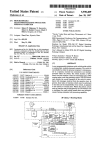
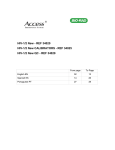

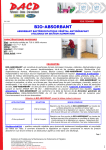
![mm [mm [1 um um [11115151116 |])|]1]](http://vs1.manualzilla.com/store/data/005839409_1-1dd2adaaab9a040f039445848c9c3135-150x150.png)

